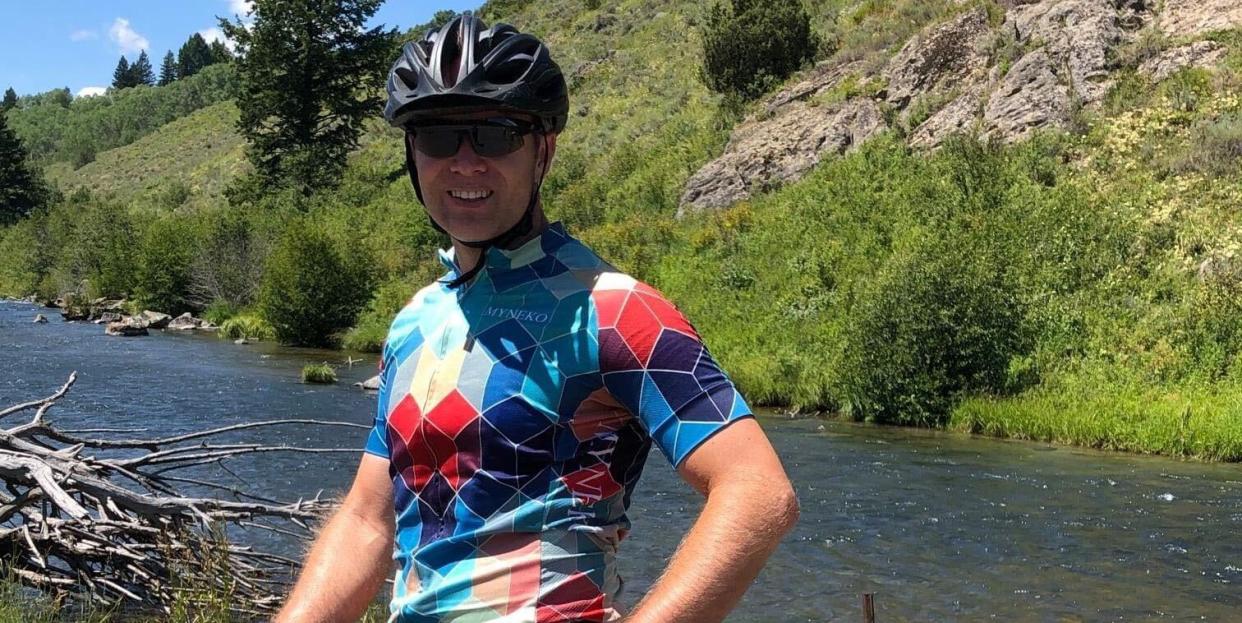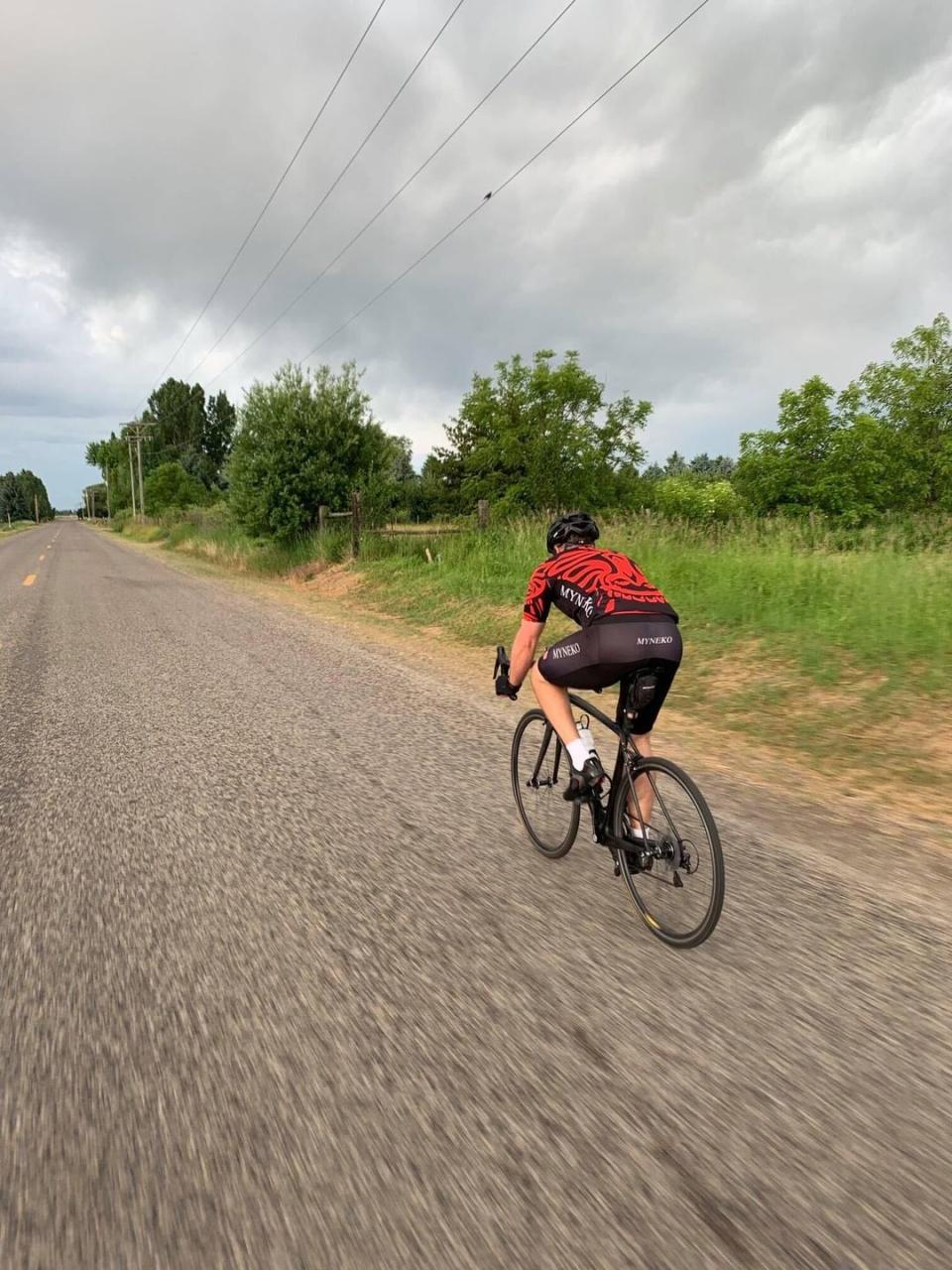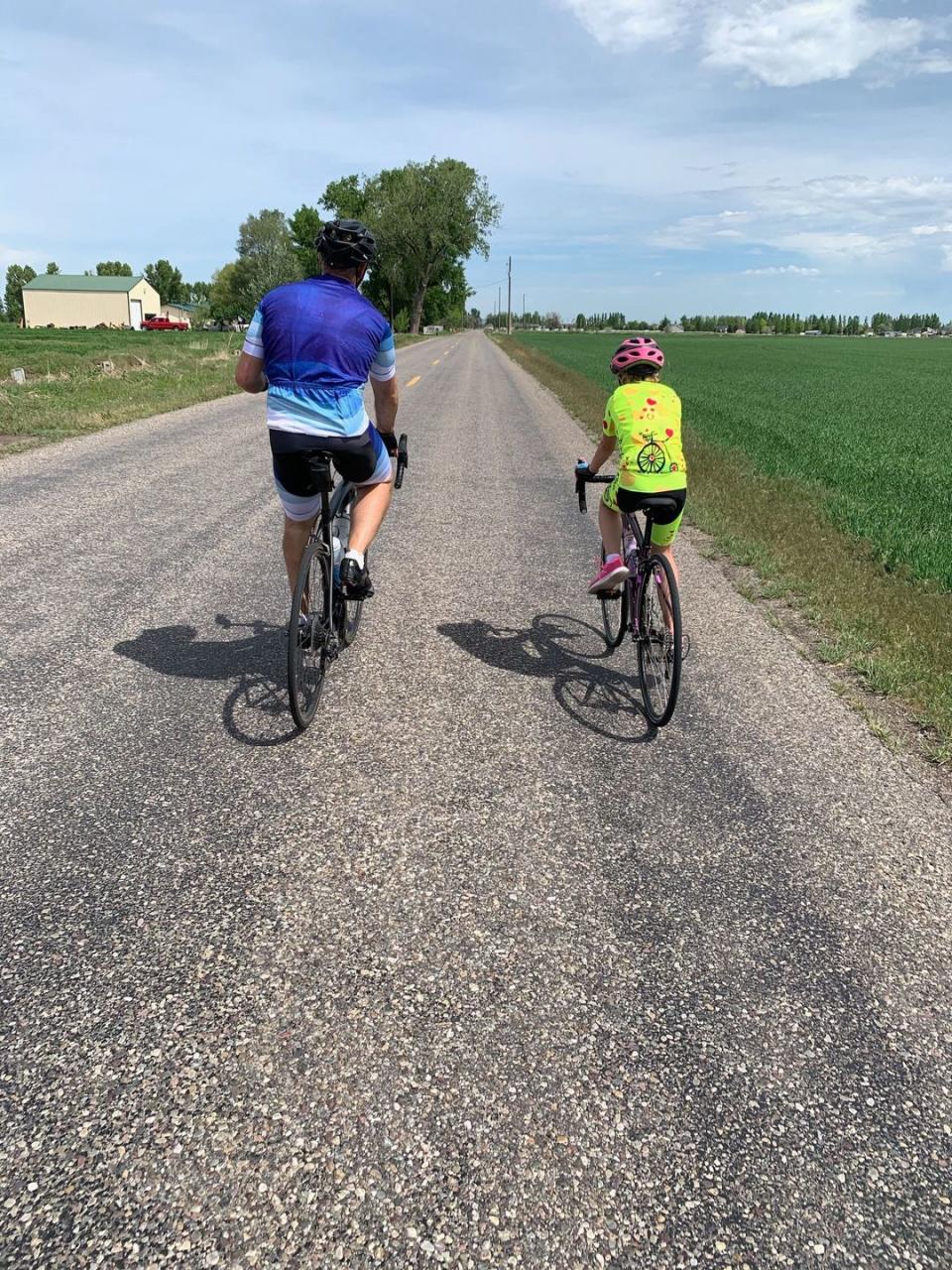After a Knee Replacement, This Cyclist Now Rides 2,500 Miles a Year

Age: 40
Occupation: Pharmacist
Hometown: Rigby, Idaho
Time Cycling: 4 years
Reason for Cycling: I enjoy it, and it’s my break from the world—my time to meditate.
I have been an athlete my entire life. As a teenager, I played high-impact sports including football, basketball, and track and field (high jump, long jump, sprints). I managed several minor joint injuries that continued to compound as I became more competitive, and I became bigger, faster, and stronger. Before I turned 20, I had severe damage to my knee and had already undergone a rotator cuff shoulder surgery. In my early 20s, I had a major knee operation to transplant cartilage grafts because I had worn down the cartilage in my right knee.
I continued to play impact sports through my 20s and had three more knee surgeries on the same knee. At age 29, my orthopedic surgeon told me it was time to give up basketball and limit my running, as there was very little they could continue to do for my knee. I became very depressed and gave up sports (and exercise) altogether and gained an enormous amount of weight, at one point tipping the scale at 240 pounds.
Over time, I got into weightlifting and began to eat healthily, which helped me better control my weight around 200 pounds for several years. At that point though, I could hardly walk without pain in my knee, and I was getting steroid injections into my right knee every six months. Because I am a pharmacist, I am on my feet almost all day and work was becoming miserable. At the age of 37, my doctor took an X-ray of my knee and told me I had the knee of an 80-year-old—bone on bone, no cartilage left.
After my total knee replacement in November of 2017, I needed to find a new healthy, active hobby that would help my new knee last as long as possible and help me stay healthy for my kids.

I had been riding a bit before (my best friend got me into it) but it could be pretty painful. After surgery, I wanted to start again, and was riding by March of 2018. My physical therapist was is a big cyclist, so he got me into a special rehab program that utilized cycling. The very first time I went to office for therapy, I couldn’t even spin the pedals around one time, so I just pedaled back and forth—not completing a rotation. It took about three or four visits like that before I was able to complete a pedal stroke, since my knee was pretty swollen from surgery.
From there, he my physical therapist gave me a specific exercise routine to get the mobility back into knee and strengthen my muscles, which I did for about two months, three times per week. I also used my trainer in my basement for slow pedaling, mostly to keep my knee fluid so it didn’t swell as much. If I skipped a few days, it would take a lot of stretching to make one revolution.
During the first year postsurgery, I had to stretch a good 15 to 20 minutes just to get it ready to go on a ride, because every morning my knee was still pretty stiff. That year, if I’d ride more than 40 miles, I’d get pretty tired and sore, but now I can ride centuries and my knee feels fine. The only times it gets stiff are if I go too many days without riding, so I try not to do that.
Shortly after I started, two more friends got bikes and we started riding regularly in the mornings together. I discovered Strava and found several friends from close by cities and my biking circle began to grow.

Typically, I ride three to four times a week and it will range from 20 to 100 miles, depending on work schedule or if I’m riding solo. I recently got my daughter and wife into it, so I go on more rides with them, but usually 20 miles is the longest we go.
And, I have really dialed in my nutrition, which happened when I first started with rehab and right after knee surgery. I watch my carbs to make sure I’m eating healthy ones, and I cut out soda about two years ago. Those changes stuck and I’ve had the same diet ever since. I still eat what I want, I just try to make healthy choices. (I’ve found that when I’m over a certain weight, it puts more stress on my knee and lower back, so I try to keep my weight within 15 pounds.)
My first year (usually I get about five months of biking weather in Idaho) after my total knee surgery I rode about 2,000 miles in 2018. In 2019, I went over 2,500 miles, and this year (due to COVID) is still up in the air, but I'm still going strong already over 1,000 miles.
Since my outdoor riding season is pretty short due to the weather, I set my bike up on the trainer in the winter and do a lot of HIIT. By the time spring comes around, I’m ready to get out and enjoy nature and the scenery—I get sick of seeing the same thing in my basement.
Now, my knee feels fantastic and my mood has greatly improved since finding this new hobby and supportive social circle of biking buddies. It is also a hobby my family enjoys together and is a sport I can see bringing us close together and something that will bond us for years to come. Biking may have saved my life!
We want to hear how cycling changed you! Send your story and submit your photos to us via this web form. We’ll pick one each week to highlight on the site.
You Might Also Like

